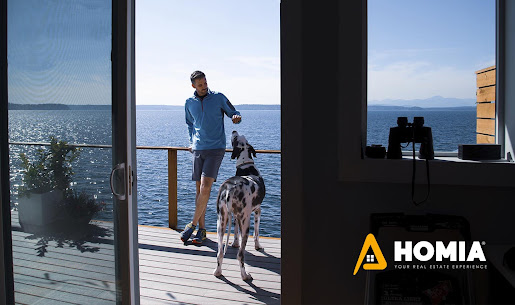Many people involve their pets in all aspects of their lives. They are a part of the core of the family and are welcome to participate in most events. When pet owners go shopping or run errands, they want pet-friendly establishments. It is not rare to see people traveling or vacationing with their pets. Pet strategies in the hospitality sector, including food service and retail, have evolved over the years. Certain restrictions remain in place, but things are changing for our four-legged friends.
It has long been believed that families with children are more likely to have pets than those who do not. Similarly, certain empty nesters have become used to keeping a pet in the house. It seems that having a four-legged friend makes for nice company as we grow older.
But what happens if you want to move? And let’s presume you’re moving south of the border! You may be interested in learning more about pets and real estate in Mexico. It really isn’t that difficult to bring your beloved companion(s) along with you. When embarking on a life-changing adventure, pets will help you deal with anxiety.
Real Estate in Mexico and Pets
The following paragraphs should include some basic details to help you with your transition.
Documentation Needed to Enter Mexico with a Pet
A certified certificate of health for your pet(s) is no longer needed to enter Mexico effective December 16, 2019. However, this does not imply that you can simply cross the border and continue on your way. The pet’s owner must take the animal to Mexico’s Agricultural Health Inspection Office (OISA) for a brief inspection. Until official entry is permitted, the following procedures must be completed.
- Travelers must visit the Mexican Animal and Plant Health Inspection Office (OISA) upon arrival in Mexico with their pet dog(s) and/or cat(s) in a clean cage(s)/carrier(s) to contact the official staff working with SENASICA. The following will be checked by official personnel:
- That the dog(s) and/or cat(s) are free of infectious and contagious diseases.
- The animal(s) is/are ectoparasite-free*.
- The animal(s) does not have fresh wounds or wounds that are healing.
*If parasites are discovered during the physical examination, the owner/user should contact a veterinarian (or anyone) so that an adequate medication can be administered. If ticks are found, SENASICA workers will collect a sample of the ectoparasite(s) for testing at the official laboratory and will ensure that all parasites have been removed from the pet (s). The animal(s) will be held at the OISA [Mexican official office] until it is determined that the parasites are not exotic/foreign to Mexico or are not part of a Mexican Animal Health Program (Campaign).Otherwise, SENASICA can assess the appropriate steps through the Animal Health General Direction. Expenses incurred as a result of such conduct must be covered by the importer.
Other requirements/information about inspection at the OISA upon presentation of the shipment in Mexico:
- If your pet(s) is/are being treated for lesions and/or infections on the skin caused by mites, dermatomycosis, dermatophylosis, hairless or similar lesions, you must present the diagnostic and treatment prescribed by the veterinarian to the official staff of SADER/SENASICA. Such material, including the professional registration number, should be provided on letterhead (or equivalent). It is appropriate to include a copy of the professional registration number with the letterhead (or equivalent).
- Compliance with what is stated in this document does not preclude the importer from presenting documentation, submitting applications, and/or following procedures requested by other authorities.
- If the cage/carrier is filthy and/or contains bed disposable (newspaper wood – other materials) toys or edible items, a disinfection may be performed, removing everything inside the carrier/cage in order to properly destroy it.
- Only the amount of food used to feed the animal on the day of arrival would be permitted.
NOTE: If you fly often between the United States and Mexico with your dog, you can apply to be a part of the “Pet Program – Frequent Traveler.” For more details, please call 59051000, ext. 53611, 54326, and 51020, or (0155) 43130154, 43130155, and 43130152.
Considerations for airline travel:
Traveling by Air with Your Pet
Most airlines allow pets to fly with them, but there are some limitations, as with anything else. Here are a few common policies found in the airline industry:
- Your pet’s size will decide whether it can fly in the cabin or the cargo hold.
- Smaller dogs in a travel carrier that fits under the seat can be accommodated in the cabin.
- Larger dogs will be transported in the cargo hold of an authorised carrier.
- If the flight is longer than 8 hours, the pet must travel in the cargo hold, regardless of size.
Please keep in mind that it is always best to check with your preferred airline before traveling with a pet.
Airlines may have separate and additional requirements. Check with your airline to determine what requirements they may have, if any.
Finding an Appropriate Property
Once you’ve agreed to move to Mexico, the search for the perfect home for both you and your pet will begin. When searching for a spot where pets and Mexico real estate will coexist, there has to be a happy medium. Until touring properties with a trained representative, you should address some basic criteria. Here are a couple of ideas:
- Is there enough room for you and your pet to live comfortably?
- Is there a pet-friendly complex, building, or community?
- Is the flooring in the house suitable for pets?
- Is it possible for your pet to get up and spread its legs?
Other factors to consider include the availability of a deck, greenhouse, or patio, adequate furnishings, and ease of maintenance. There are just a few ideas to help you narrow down your quest for the ideal house.
When looking for a house, you should seriously consider a free-standing home. The benefits will be more space and a private outdoor space. The downside would be that more overall maintenance would be needed. The advantage of a condo would be less upkeep in terms of landscaping and building repairs. However, the size of your pet can determine how much room you need to spread out and play. Both types of homes can be found in a number of neighborhoods.

 English
English Spanish
Spanish